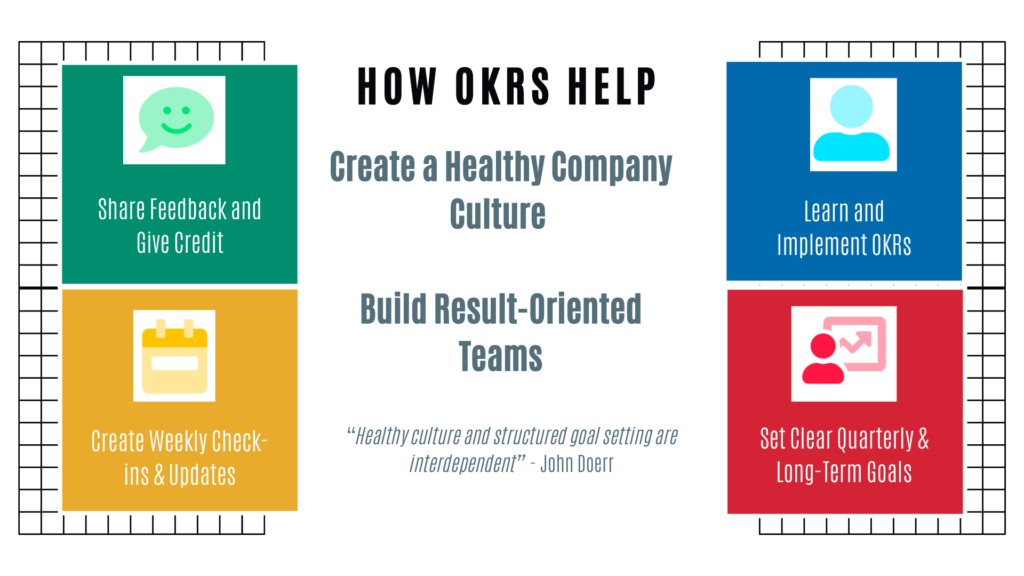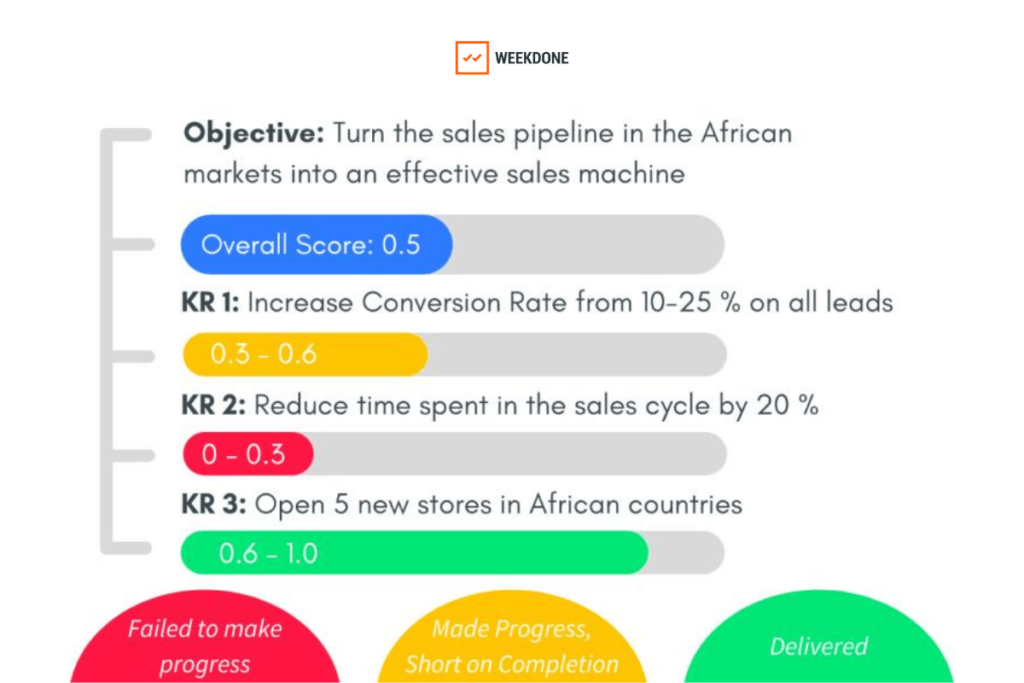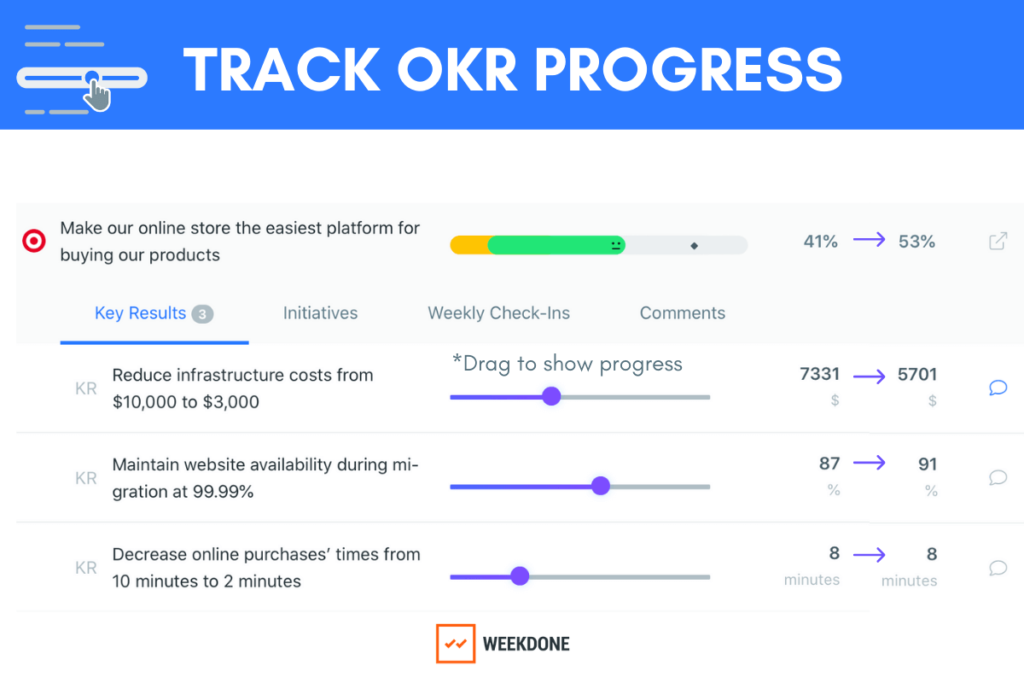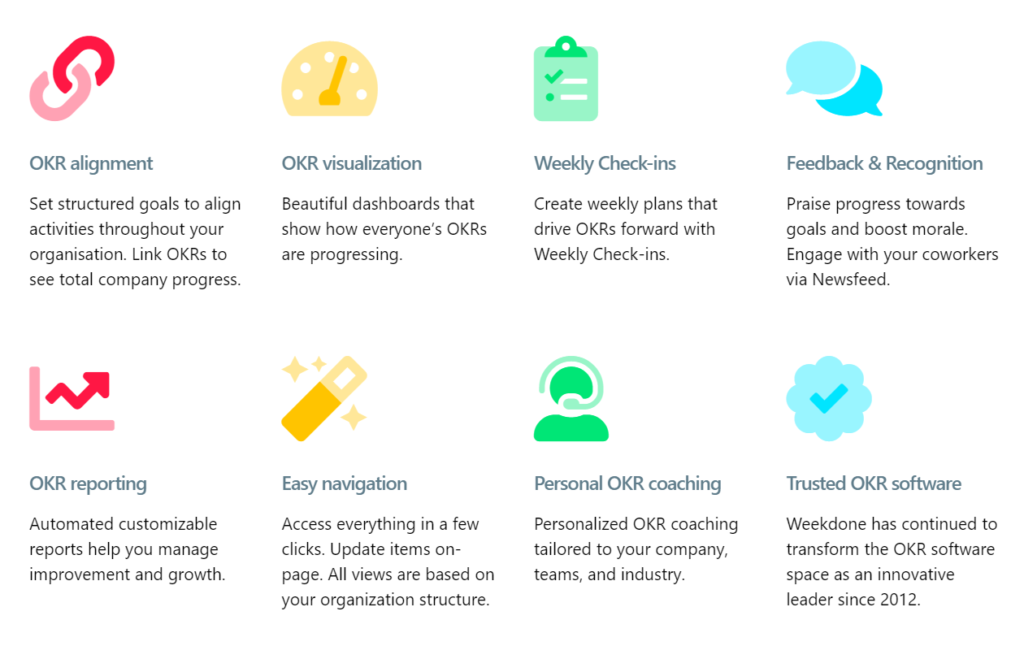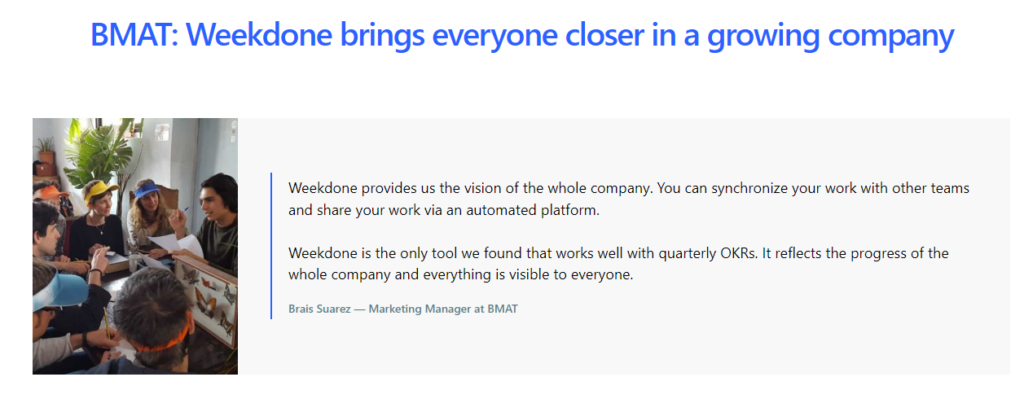In an unpredictable world, long-term strategic plans (5 to 10 years) can no longer endure the test of time. Agility is the superpower that organizations need – to adapt quickly to change. That’s why the Objectives and Key Results (OKRs) approach is a preferred method to set and review goals every quarter.
When executed right, the 90-day sprint of setting goals can be an effective method and a powerful tool.
Setting company, team, and individual goals helps maintain focus on the top priority objectives critical to success. It also nurtures a company culture of accountability, feedback, and team collaboration.

The essence of OKRs is to create a work environment where every employee knows the direct impact their work has on the company’s success.
The Backstory of Google OKRs
In 1970s, Andrew Grove, CEO of Intel, introduced the concept of OKRs and revolutionized the top-down management system. The new system involved recognizing employees for their accomplishments instead of their degrees, titles, or background.
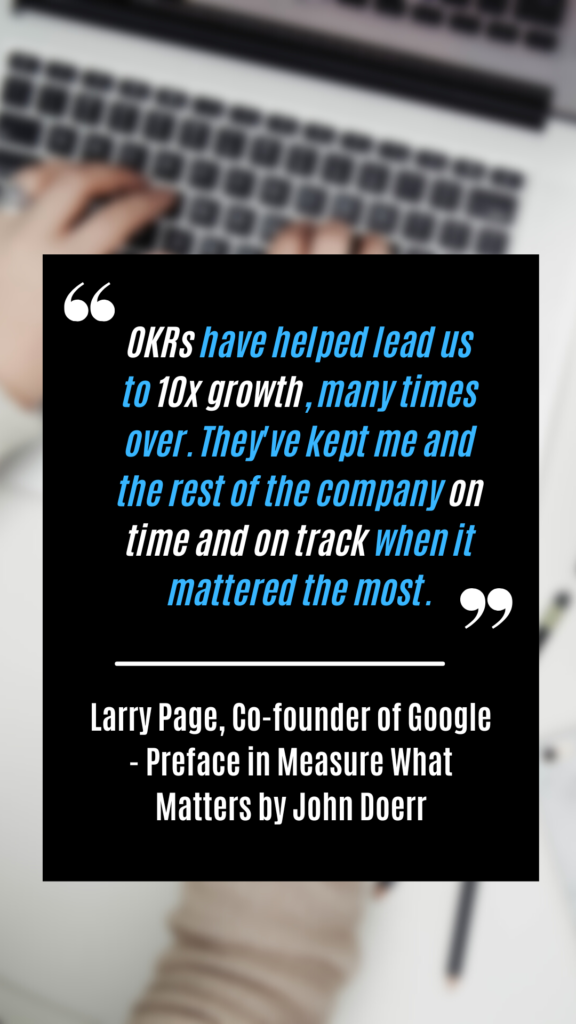
In 1983, Grove documented his learning and published his book High Output Management which includes techniques to create high-performance teams and how using methods of motivation can lead to higher productivity.
In 1999, John Doerr as an advisor introduced OKRs in Google. With buy-in from the founders, Larry Page and Sergey Bin, OKRs were adopted across the whole team, which was around 30 employees at that time.
From that time, OKRs have become an intrinsic part of Google’s culture- and have been credited for streamlining team hierarchy, boosting growth, and improving employee motivation.
How Google Achieves its Company Goals Using OKRs
Set the Context: Why You Must Customize Google OKRs
There is no one-size-fits-all formula for setting and measuring OKRs. What works at Google may not necessarily work in your company. But, you can learn from the best and tailor the approach to fit your needs.
Do you have an environment of feedback, failure, and future success?
To successfully implement OKRs it is necessary to have a culture where everyone can set ambitious goals, share constructive feedback, aim to succeed, and dare to fail.
The common practice in the OKR process is to share objectives and key results of different teams publicly. Team members need to feel free to discuss and give feedback to create OKRs that work the best.
Some of the best-performing OKRs are those that are ambitious. That’s why it is important to have a fail-friendly environment and work culture that allows team members to take risks, innovate, and think creatively to achieve aspiring goals.
Google OKRs are graded quarterly. Does this work for your team?
OKR Planning Cycle
For teams in mature companies like Google, OKRs are planned annually and reported on quarterly.
At Weekdone, we recommend that OKRs are planned each quarter, in order to support that long-term annual strategy. However, it’s possible that new teams may want to move into a shorter cycle to get familiar with the goal-setting and tracking process.
Setting shorter OKR cycles (such as 6 to 8 weeks) can give new teams ample amount of time to set Objectives and Key Results, complete initiatives, and conduct retrospectives sooner.
This shorter cycle will give you insight into what’s working and what’s not at an earlier stage – allowing you to make improvements as required.
Conventional OKR Scoring Method
Google OKRs are graded on a scale from 0.0 to 1.0, where 1.0 means it was fully achieved. The ideal grade to achieve OKRs is an average score of 0.6 to 0.7.
In this grading system, scoring lower than the average means that the company is not accomplishing as much as it can achieve. While scoring higher than the average means that the goals are not ambitious enough.
Read more about OKR scoring.
Value-Based OKR Scoring Method
To avoid reducing measuring value to numbers, another method to score OKRs is a value-based system. Allowing you to meaningfully measure key results and outcomes, this value-based method is a preferred OKR scoring method because it:
- Provides a clear baseline and benchmark to measure key results
- Demonstrates if goals are ambitious enough or not
- Increases accuracy by using data-based and numeric metrics
- Ensures weekly progress is measurable
Keep in mind that the value-based OKR scoring method requires regular Check-Ins. To easily and efficiently ensure regular feedback and check-ins, most companies use OKR software.
Know the difference between traditional and value-based OKR scoring methods
“Moonshot” OKRs can lead to missing your goals. Would “Rooftop” goals work instead?
“Moonshot” Vs. “Rooftop” Goals
Created as ”moonshots” or ambitious goals, Google OKRs are created to encourage employees innovate, and think creatively. They typically have an OKR completion score between 60 to 70%.
These type of goals are challenging and difficult to achieve. This fail-friendly approach works well for mature teams and can create an exciting work environment and attract the most skilled workers.
If you are in the early stages of OKR implementation, “moonshot” goals can be demotivating. Not achieving goals regularly can make team members question their abilities. An ideal ”rooftop” OKR goal is considered to be one that can be achieved with an average score of 80 to 100%.
Stretch and SMART Goals
A good way forward is to set stretch goals. These are high-risk and high-effort that push teams to achieve more. Stretch goals may be difficult to achieve, but they can increase the chances of success. Moreover, “rooftop” stretch goals serve as a foundation based on which you can set long-term “moonshot” goals.
Keep in mind that SMART goals are not the same as stretch goals. Unique in their own way, the type of goal you choose depends on several factors. Some companies combine different types of goals to drive ambitious yet realistic objectives and key results.
What type of OKR goals are relevant to your company? Before making a choice, ask yourself:
- Have you identified your realistic and ambitious goals?
- Have you identified the initiatives to be successful?
- Does the timeline make sense to achieve your objective?
- Do you have the resources to implement your aspiring goals?
- Do you know how you will measure success?
- Are you and your team comfortable with missing goals?
Stay on Track with Goal-Setting Using Weekdone OKR Software
The goal of Weekdone OKR software is to empower teams to work toward the relevant business metrics using the OKR methodology. The goal-setting framework includes an Objective and the Key Results.
Check out this step-by-step guide to learn how to set, implement, and succeed using OKRs,
How Weekdone Can Help Build a Result-Driven Company Culture
Check out how OKRs are implemented successfully. Consider these real-world results from customers using Weekdone.
Ready to get started? Or would you like to discuss your goals with an OKR coach and find out how Weekdone can help?
